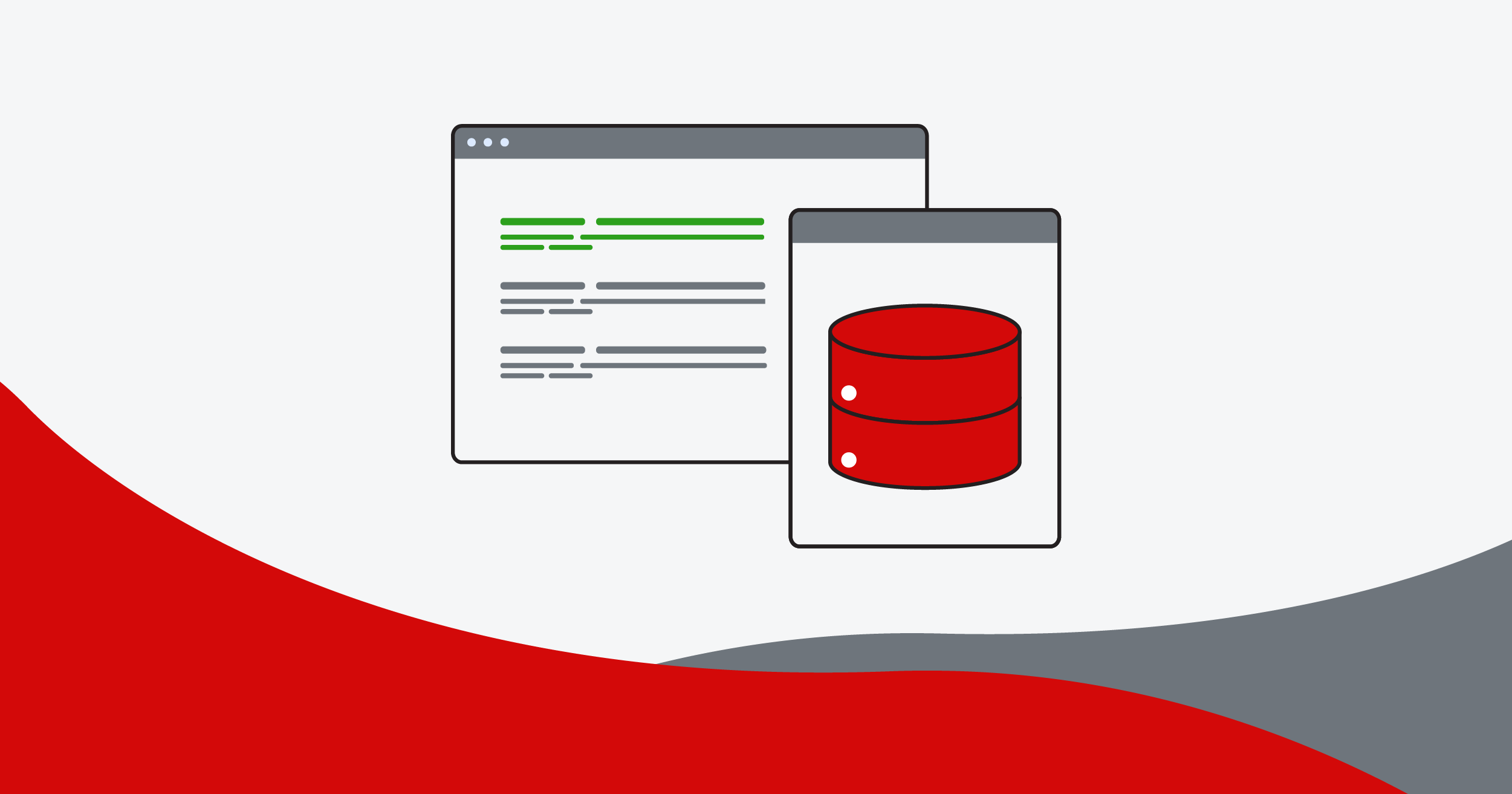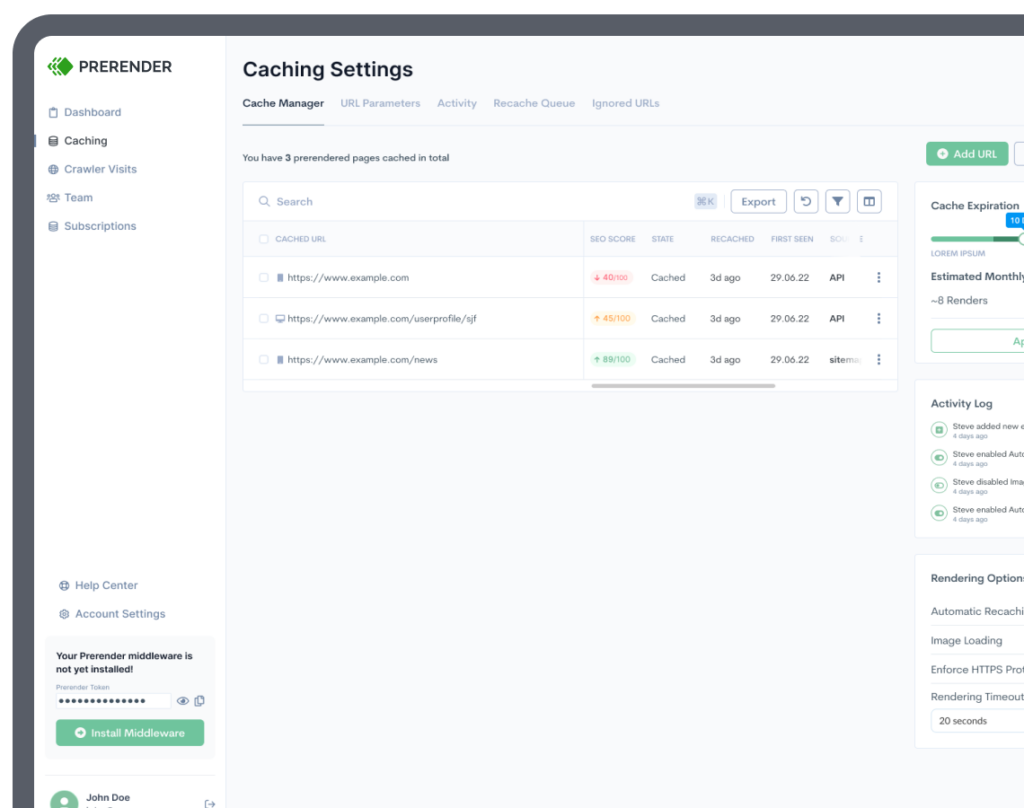PageSpeed is a critical factor in attracting traffic. It’s a well-known fact that swift and smooth website experiences are favoured by both visitors and search engines alike. Notably, these factors serve to enhance the SEO performance of your JavaScript website.
So, the question arises—how exactly do you optimize PageSpeed?
Several elements affect PageSpeed, but caching stands out as one of the most significant, especially when it comes to JavaScript-based websites. The impact of caching extends to the performance of website rendering, user experience, and even search engine rankings. Furthermore, the way caching in JavaScript affects SEO is crucial. In this article, therefore, we will delve into caching, explore its effect on SEO, discuss the optimal ways to implement it, and highlight the importance of caching in JavaScript.
What is Caching?
Caching is storing and reusing frequently accessed data of a website. To give more clarity, let’s use an analogy.
Imagine you have two boxes full of toys: one big and one small. Now, when you want to locate your favorite toys, it is faster and more resource-efficient to find them in a smaller than larger box.
Caching operates like a smaller box, acting as a personalized space where the webpage elements of your visited sites are stored for quicker access. This includes the images, scripts, stylesheets, and other webpage resources (in HTML, CSS, JavaScript, and other format).
This means that when a user visits a page, caching enables the browser to download and process these pre-saved files faster, instead of fetching and generating the same content from scratch repeatedly. Consequently, you’ll have quicker website rendering and higher PageSpeed. And since PageSpeed is a ranking factor, the faster your pages load, the better your SEO performance.
Pro tip: Get a deeper understanding of caching and how it impacts SEO in this in-depth article.
The Problems with JavaScript Caching
Now, caching may be an excellent method to cut page load time, but it can be problematic when it comes to caching JavaScript files.
Due to its dynamic nature, caching JavaScript files is more challenging than other file types, such as HTML. It can cause two main problems: cache invalidation and first-page load delay.
- Cache invalidation: when you update your JS-based website, users may not see the latest version. This is because the browser typically retrieves the cached version to lower the loading time.
- First-page load delay: every time a user visits a new website or just recently cleaned up their cache, the browser needs to fetch all the JS files again. Consequently, the heavier you rely on JS elements, the slower your page will load.
That said, there are some strategies to overcome JavaScript caching issues. This and methods to implement caching will be explained below.
How to Implement Caching?
There are three popular methods you can use to cache JavaScript files: LocalStorage, cache API, and prerendering service.
Caching Using LocalStorage
LocalStorage is a built-in web JS storage mechanism that allows you to store key-value pairs on the client side. It’s a simple way to cache small data, such as user preferences or tokens.
To implement caching through LocalStorage, web developers can check if the requested information is available on the platform. If it is, they can retrieve it directly from LocalStorage instead of making a network request. However, if the data is unavailable, they can fetch it from the central storage location and store it in LocalStorage for future use.
Here’s an example of caching using LocalStorage.
// Check if data is available in LocalStorage
const cachedData = localStorage.getItem('cachedData');
if (cachedData) {
// Data is available in LocalStorage, use it
const parsedData = JSON.parse(cachedData);
// Do something with the parsedData
console.log('Data retrieved from cache:', parsedData);
} else {
// Data is not available in LocalStorage, fetch it from the server
fetch('https://api.example.com/data')
.then(response => response.json())
.then(data => {
// Store the fetched data in LocalStorage for future use
localStorage.setItem('cachedData', JSON.stringify(data));
// Do something with the data
console.log('Data fetched from server:', data);
})
.catch(error => {
// Handle any errors
console.error('Error fetching data:', error);
});
}Using Cache API
Another popular method for caching JavaScript files is the Cache API. Cache API is a more advanced and powerful way to cache data and assets on the client side.
The Cache API is typically used to cache resources. It is particularly useful for Progressive Web Apps (PWAs) and websites that need to provide a dependable and fast user experience, even in offline or slow network conditions. This article will give you more information about working with cache API.
Using Prerender
The last method for caching is using a prerendering service like Prerender. Adopting Prerender is particularly useful for a heavy JS-based website since it solves JavaScript caching issues.
When a search engine bot initiates a page request, Prerender automatically crawls and caches the page. During this process, all the essential files for website rendering are downloaded and ready to be served to the bots when requested.
Consequently, Prerender helps solve JS caching problems and more:
- Schedule recaching
After you update your JS page, you can queue them to be recached. This will generate the latest cache data, guaranteeing that users will always see the latest content.
- Reduced first-page load time
Since Prerender takes and saves a snapshot of your pages in the HTML version, whenever bots request a page, they’ll be given the prerendered version. This drastically cut the website rendering time, resulting in faster page load time and response.
This blog will tell you more about how Prerender works and its effects on your website’s visibility and SEO performance.
Roles of Caching for Your Web Application Performance
There are many reasons caching can improve your web application performance, but here are the most important:
- Reduce server load
This is especially beneficial for high-traffic websites and applications, such as e-commerce websites. And since your server doesn’t do the heavy lifting, you can cut costs in upgrading and maintaining it.
- Improve SEO performance
Caching also has a direct and critical impact on SEO. Search engines tend to rank high websites that load quickly and provide an excellent user experience. By implementing caching techniques in your JS website, you can dramatically improve your website’s loading speed and its Core Web Vital scores. As a result, your rankings and visibility will be boosted.
- Create robustness against heavy traffic
Caching allows a website to handle a larger number of users and traffic without the need to upgrade the server. This cost-effective scalability is essential for businesses with fluctuations in traffic (e.g., sudden traffic spikes) and websites with lots of dynamic content.
- Serve as failover
By implementing caching, you will create a redundancy and failover mechanism. This means that when the primary server or data source encounters some issues, such as downtime, the cached content can continue serving the visitors. This will prevent service interruptions and maintain a good user experience.
Avoid Caching Irrelevant Pages (for SEO)
While caching website pages may be great for your enterprise SEO health, not all pages should be cached. This includes pages that collect sensitive or private information (e.g., login, user account, and checkout pages) and any single-use pages (e.g., pages to promote one-time events). Additionally, administrative or backend pages intended for website management should also be excluded from caching.
Selecting pages you want to include and exclude from the caching queue can be tedious. However, If you use Prerender, you can easily choose them from your dashboard.
Furthermore, Prerender is also handy for caching dynamic content pages. Its content freshness and recaching feature ensure that visitors will get the up-to-date content, not the outdated one.
Optimize JavaScript Caching for Better SEO Results
Caching is a valuable technique that can increase PageSpeed and SEO performance. Knowing what caching is, its roles, and the challenges in caching JavaScript files allows you to make informed decisions to best address your website caching needs and improve your SEO health.
Don’t let JavaScript caching issues block your web from showing up on the top SERPs. Adopt Prerender today and see the difference it can make. Start free with 1,000 free caches, and upgrade as you scale!



